Are you looking for a fun and engaging way to build your students’ color mixing skills? Try implementing the “Color Matching Challenge” in your classes!
This activity has students trying to match paint swatches with a limited palette under a time constraint. You can have students compete within their classes or make the competition more difficult by making it between all of your students on a given day. The student with the most matches at the end of the class period or at the end of the day wins!
Here’s how it’s done.
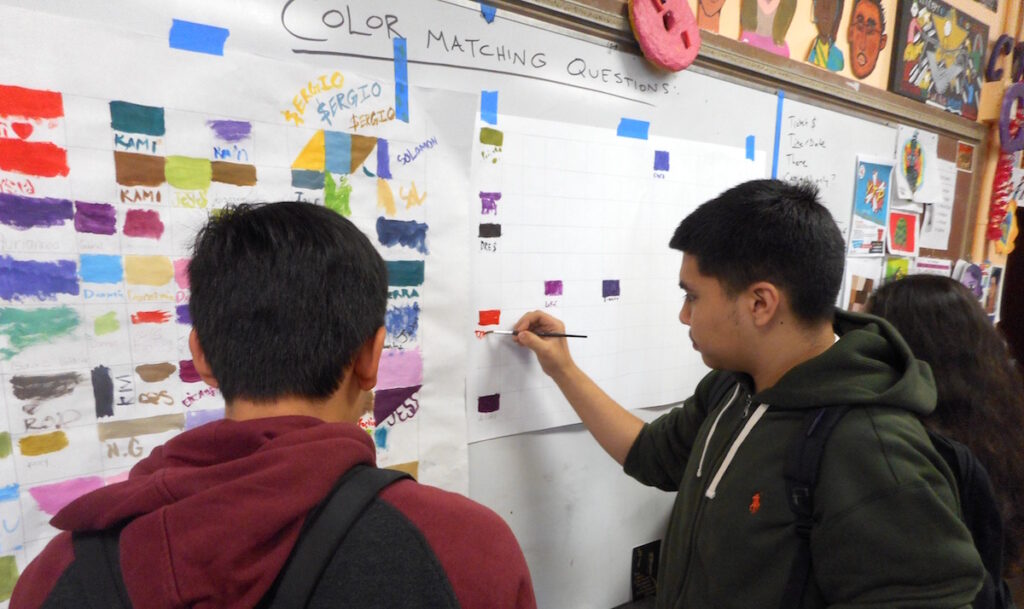
1. Obtain Paint Swatches
Any local paint store will have its fan deck posted in free color swatches. Go grab as many different colors as you can. Try to get a range, from deep hues, to neutral tones, to pastel values. Ideally, you’ll have more swatches than you have students. If you get flack from the store for taking so many samples, tell them you will be promoting their products to hundreds of potential future clients!
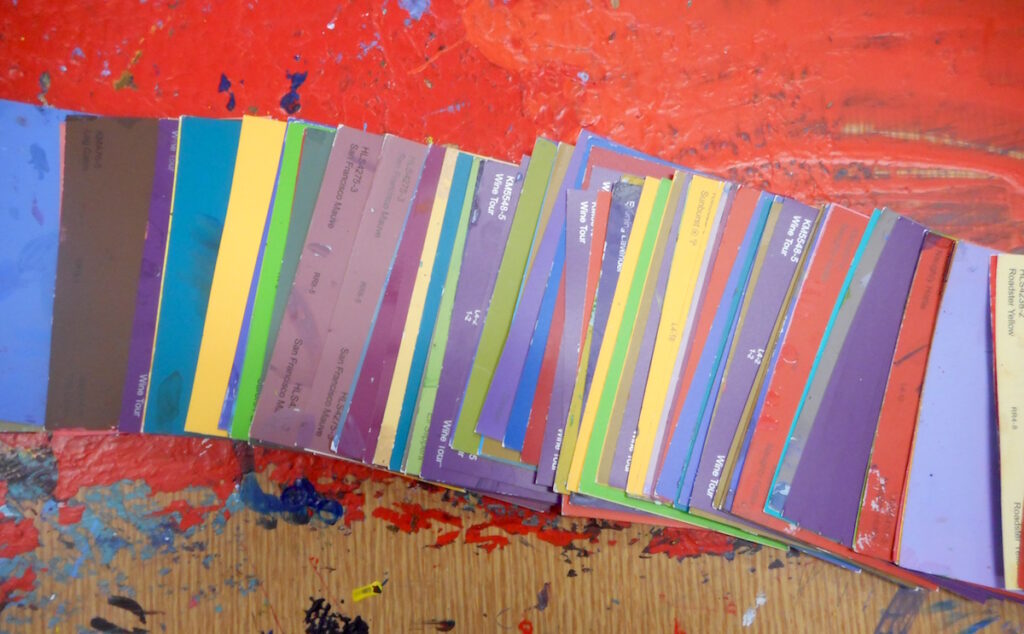
2. Introduce the Challenge
Once you have the swatches, it is time to pump up your students! I tell them they will be engaging in a color matching challenge between every student I teach. Then I drop the rationale.
Of course, students need to be adept at color mixing to create their best work. Often students will be painting with a specific color in class but only get halfway through before the bell rings. The next day, students will need to be able to remake that color.
Beyond that, it can have concrete applications for their futures. For example, there are professional occupations at paint stores called “tinters.” Tinters are people who match colors for a living (like I did for years before teaching). Students might also use these skills as crew members for professional painting companies or as interior designers. Color matching is a crucial skill for painters of all kinds.

3. Give Students Time to Set Up Their Palettes
This activity works well with a limited palette of red, yellow, blue, magenta, red oxide, yellow oxide, and white. Give students about 10 minutes to mix as many colors as they can on the 12-color wheel. In addition, have them add some white on their palette.
4. Pass Out the Swatches and Let the Fun Begin
Once the 10 minutes are up, pass each student one random color swatch facing down. No peeking allowed! Once you give the word, have students flip over their swatches and get to matching. As soon as they get close to the color, have them apply a small amount on the swatch to really compare the two. Once you declare a match for a student, that student paints their color up on board in a square and paints their name beside it. The “board” I am referring to is simply a piece of butcher paper with a grid of several small boxes. You can lay it on an extra table or tape it on a spare wall.
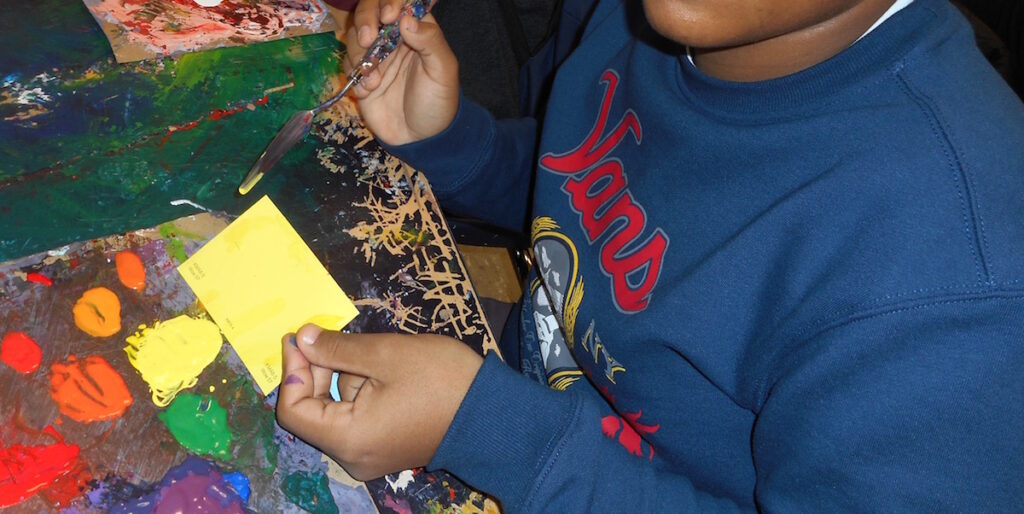
A note about your role in the process: Get ready for a workout! There will be a lot of dependence on you because you determine when students have matched the color. Students will be calling your name to check their colors for a match, asking your advice for what to add, and demanding new color swatches. Once a student matches a color, take their color swatch, wipe any paint spots off, and reuse that swatch with other students. Color swatches can be used numerous times before they become too difficult to decipher.
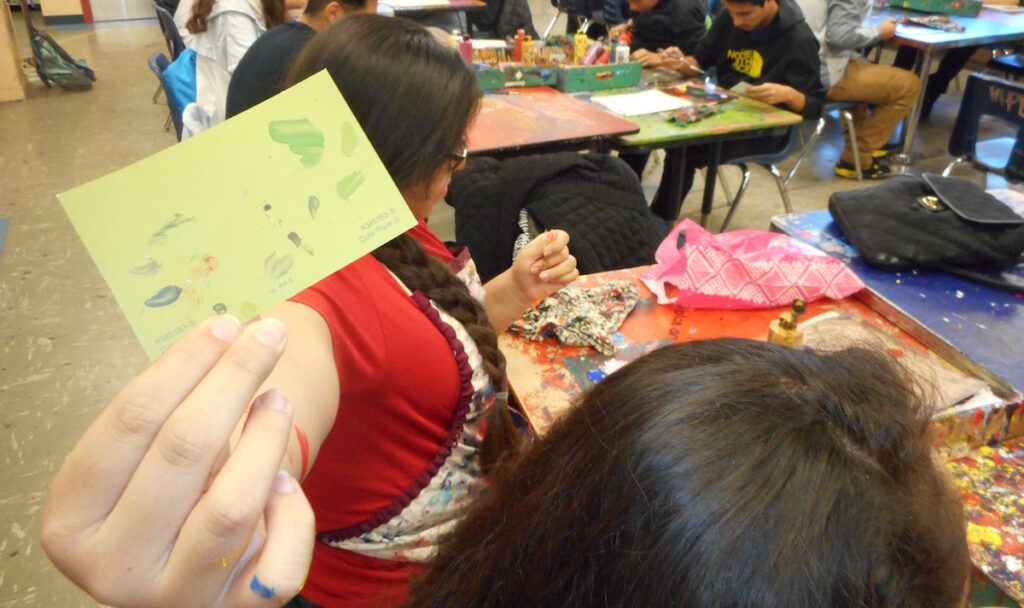
5. Clean Up and Assess the Leader Board
As cleanup approaches, announce that you will be closing the window for approving color matches in two minutes. Keep a countdown or visual timer going because you’ll have students who will have a difficult time stopping!
Instead of trying to count every name and every match on the board, ask around to see who is claiming the most matches. After confirming, write down the top scores each period. If you’re having students compete throughout the day, display a running list to heighten the competition. I often find the winner comes from the last period of the day.
If you’d like, give out a prize. A new paintbrush or two is always appreciated!
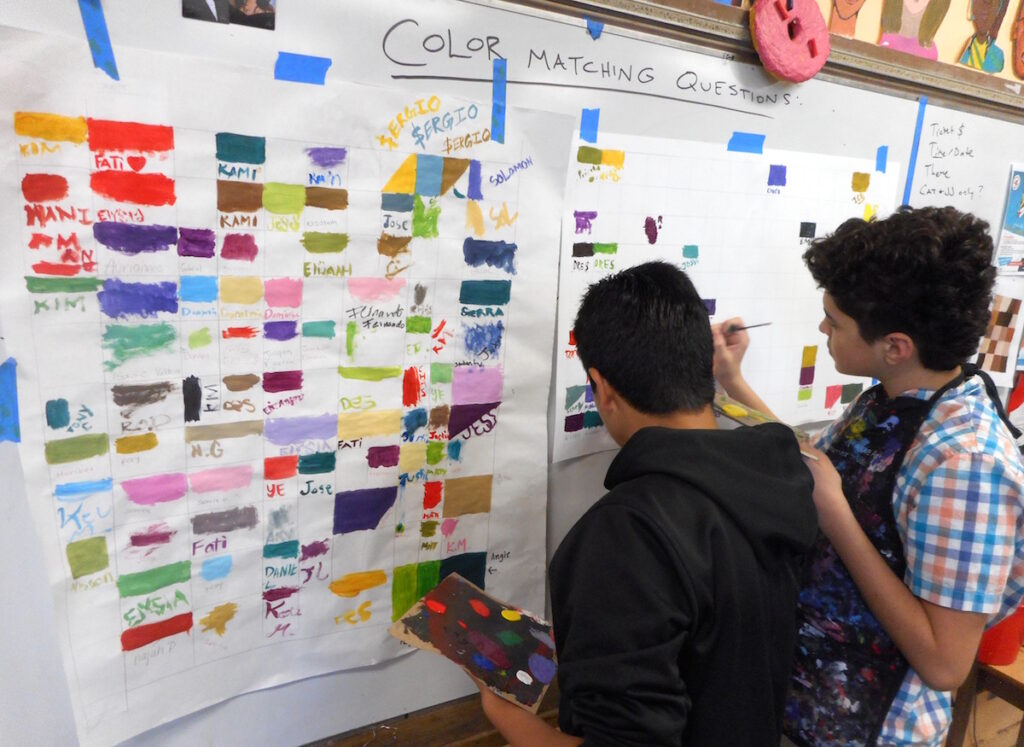
The Color Matching Challenge is great way to get students to think about how to make colors from scratch. It allows them time to practice, builds skills, and is highly engaging. It is rarely difficult to motivate students to try this out, even if they do not care about the competition part. The prep work is easy enough as well. All it takes is one trip to the local paint store, and you are ready to rock!
What questions do you have about implementing the Color Matching Challenge?
What are other ways you get students to mix and make colors?
Magazine articles and podcasts are opinions of professional education contributors and do not necessarily represent the position of the Art of Education University (AOEU) or its academic offerings. Contributors use terms in the way they are most often talked about in the scope of their educational experiences.





